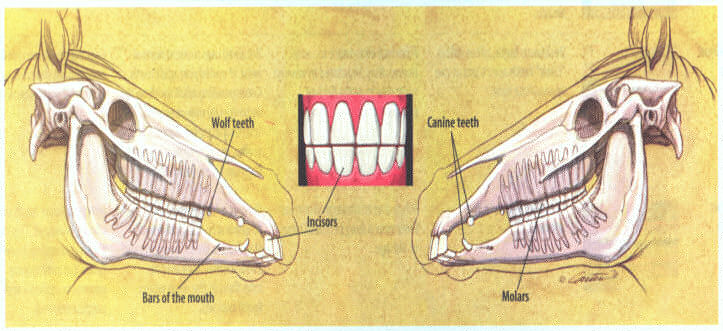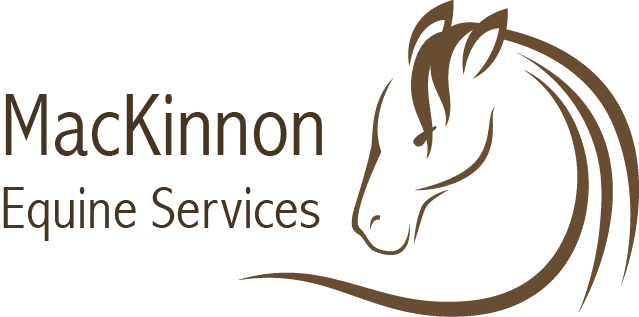Equine Dentistry - Dental Facts
Use this inside look to help you understand your horse’s dental structure and how each set of teeth functions.
- Your horse has between 36 and 44 permanent teeth. If he’s a gelding or stallion, he has 44 permanent teeth, while your mare has 36 to 40.
- His front teeth, called incisors, are designed to shear off grass and other forage. Your horse has six upper and six lower incisors.
- His back teeth, called molars, are designed to grind food into a digestible form. Your horse has 12 upper and 12 lower molars.
- Your gelding or stallion has two upper and two lower canine teeth, which are remnants of “fighting teeth” once used by his ancestors for protecting the herd. These teeth sit in the gap between his incisors and molars, known as the bars of the mouth. Rarely will mares have canine teeth.
- Most geldings and stallions, and some mares, have two small upper wolf teeth, rem- nants of molars that no longer serve a useful function. These small teeth sit just in front of the molars on the upper haw. Rarely will wolf teeth be present in the lower jaw.
- Because your horse uses his molars to grind food, these teeth continue to erupt from his gums throughout his lifetime. This helps to ensure that he has plenty of grinding ability as he matures. However, because of this continuous growth, minor misalignments are likely to become more and more pronounced with time, which is why a properly balanced mouth is so important for maintaining good health in a horse’s older years.
- Your horse’s incisors also continue to erupt throughout his lifetime. In a natural grazing environment they’ll be worn down as they’re used to tear grass and other forage. However, a stall-kept horse won’t use his incisors in this fashion, which can result in overgrowth. If your horse’s incisors become too long, they’ll actually prevent his molars from contacting one another, compromising his ability to chew effectively.
- Just like you, your horse has two sets of teeth throughout his lifetime. His deciduous or “baby” teeth (called caps) should all be pushed out and replaced by permanent teeth by about 5 years of age.

